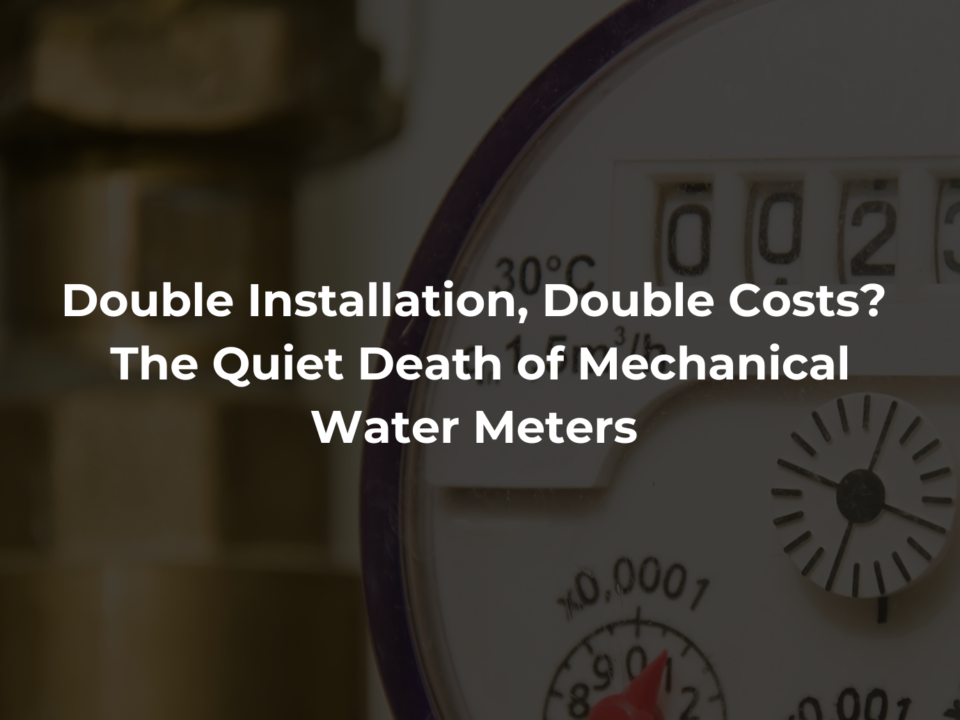5 Main LoRaWAN Network Benefits for Water Metering

Ultrasonic Meters vs Mechanical Meters: The Advantages and Disadvantages
2024-05-16
Double Installation, Double Costs? The Quiet Death of Mechanical Water Meters
2024-06-26We see that the demand for efficient water management solutions grows each year. The International Energy Agency claims that more than 34% of pumped water is lost as non-revenue water due to theft, meter errors, tampering, and faulty distribution networks. Consequently, governments create laws and regulations for utilities to protect precious water resources and manage them more effectively.
One of the efficiency components in water metering, apart from smart water meters and advanced data analytics platforms, is Low Power Wide Area Network (LoRaWAN). It’s a networking protocol designed to wirelessly connect battery-operated devices (such as water meters) to the internet across regional, national, or even global networks. As LoRaWAN is tailored to meet key Internet of Things (IoT) requirements, such as bi-directional communication, end-to-end security, mobility, and localization services, it offers numerous advantages that make it the perfect fit for smart water metering applications. For utility metering, LoRaWAN offers range, battery life, coverage capability, ease of deployment, and cost efficiency. In this article, we delve deeper into the benefits of using LoRaWAN for smart metering, highlighting five of the most important:
1. Extended Range and Coverage
One of the standout features of LoRaWAN is its impressive range. In rural areas, LoRaWAN can extend up to 15 kilometers, while in urban settings, it typically covers about 5 kilometers and can easily cover multi-floor buildings.
This extensive reach ensures that even water meters in the most remote or hard-to-reach locations can reliably transmit data back to central management systems. It’s important, however, that water meters aren’t installed under metal lids or in other environments that could affect wireless communication.
LoRaWAN network covers around 148 out of 162 countries and has a large ecosystem of developers, suppliers, and providers worldwide. This provides water utilities with a greater choice of applications for smart water metering.
2. Low Power Consumption
The long battery duration is achieved through adaptive data rates and optimized packet routing, which helps conserve energy and extend the battery life of devices. This functionality is one of LoRaWAN’s significant advantages, particularly for battery-operated devices like water meters. For example, Axioma Ultrasonic meters can operate for up to 16 years on a single battery, minimizing the need for frequent maintenance and battery replacements. This longevity translates to substantial operational cost savings. Continuous, uninterrupted data collection over extended periods ensures that utilities can manage water usage efficiently and detect leaks or abnormalities in almost real-time.
3. Security and Reliable Data Transmission
LoRaWAN security has been developed to fit the technology’s design criteria of low power consumption, low implementation complexity, and high scalability, along with separate secured keys for the network operator and the end-user application. Meters need to be secure both to protect user information and the utility from fraudulent activities. LoRaWAN security incorporates the use of standard, proven, and trusted algorithms, and end-to-end security. This involves principles such as mutual authentication, integrity protection, and confidentiality. Given that water meters are installed for many years, security must be future-proof.
In environments with significant interference or physical obstructions, data transmission reliability is crucial. By using the LoRaWAN network together with smart meters, utilities transform water management from automatic meter reading to advanced metering infrastructure, leading to almost real-time data monitoring for leak detection, bursts, and freezes. Consistent and accurate data collection is crucial for monitoring water usage patterns and responding to issues promptly.
4. Scalability and Flexibility
LoRaWAN’s capability to scale is one of its key strengths, making it suitable for both small-scale and large-scale water meter deployments. Whether a utility needs to connect a few hundred meters or tens of thousands, LoRaWAN can handle the increased demand without significant changes to the water metering infrastructure.
The ability to deploy LoRaWAN solutions over public, private, satellite, hybrid, and community networks is a key differentiator that is critical for massive Internet of Things (IoT) devices. This lets industries choose the network that suits their purposes best.
5. Cost-Effectiveness
Implementing a LoRaWAN network is generally more cost-effective compared to other communication technologies. The low cost of LoRaWAN modules, combined with reduced infrastructure and maintenance expenses, results in significant savings for utilities. The ability to support many devices with a single gateway reduces deployment costs, making LoRaWAN suitable for large-scale deployments where cost considerations are critical.
Conclusion
The integration of LoRaWAN technology in water metering systems offers numerous benefits, from extended range and low power consumption to robust data transmission and scalability. These advantages enhance the efficiency and reliability of water management and contribute to significant cost savings. As water utilities continue to seek innovative solutions to address growing water management challenges, LoRaWAN stands out as a powerful and adaptable option for smart water metering.
In conclusion, the adoption of LoRaWAN for smart water metering illustrates how technology can transform traditional industries, driving improvements in efficiency, sustainability, and cost-effectiveness. As more utilities embrace this technology, the future of water management looks smarter, more connected, and more efficient.
Mainlink’s smart water metering solution is a perfect match with LoRaWAN connectivity, and encourage the use of this effective network communication deployment in water management projects.
If you need a consultation, just contact us! Or dive deeper into our other article about other communication technologies for smart metering.

